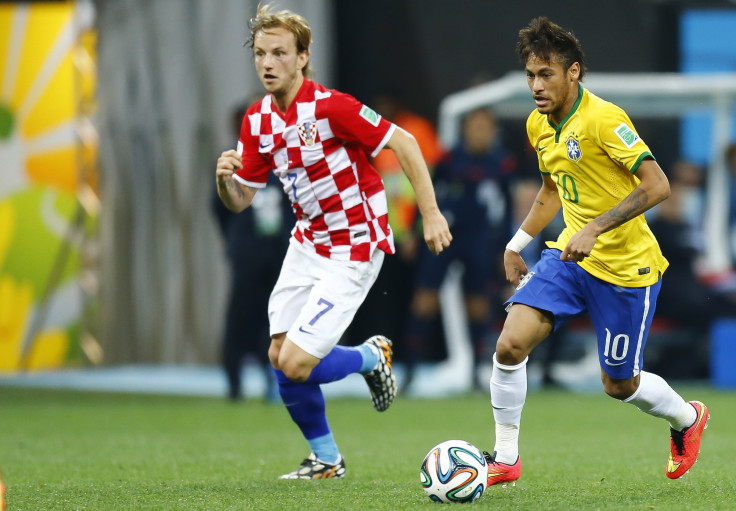FIFA World Cup 2014: Too Much Talent Can Hurt A World Cup Soccer Team, Sports Psychologists Say

A singular sporting superpower known as the “Dream Team” led America to Olympic gold in 1992, as Michael Jordan, Larry Bird, and Magic Johnson outscored opponents by an average of 44 points per game — a performance of shock and awe not soon repeated, say sports psychologists. Rather, the prevalence of high talent on a given sports team in games such as basketball and soccer may reach a tipping point after which individual talent becomes counterproductive to the collective goal: winning.
A new study published Friday in the journal Psychological Science describes how many people, including elite coaches in leagues around the world, misinterpret how individual talents contribute to success as a team. Lead author Roderick Swaab, a professor at INSEAD, says the “ball-hog” effect may be seen among teams competing at the top levels of today’s sporting events. On Tuesday, reigning champion Spain suffered an upset to Croatia in the 2014 FIFA World Cup tournament, despite a preponderance of elite players on the team. One day earlier, the star-studded Miami Heat of the National Basketball Association fell to the San Antonio Spurs, ending their two-year title reign.
“Most people believe that the relationship between talent and team performance is linear — the more their team is packed with talent, the better they will do,” Swaab said in a press statement. “Yet our latest research documenting a ‘too-much-talent effect’, reveals that for teams requiring high levels of interdependence, like football and basketball, talent facilitates team performance… but only up to a point.”
Beyond that tipping point, the benefits of increasing individual talent would decrease team interdependence, until it eventually begins to hurt team performance. However, the idea that individual talent would hurt team success remains anathema to the non-academic, perhaps. Swaab and his colleagues cite French national team coach Didier Deschamps, who told reporters after five losses last year that acquiring more elite players would provide the key to future success — a solid conclusion in the minds of most.
In the FIFA World Cup, “we expect to see plenty of team-sheets boasting impressive lineups with top talented players,” Swaab said. “However, coaches that simply select their side with superstars may, contrary to popular belief, be the ones taking an early exit from Brazil!”
More broadly, the ball-hog effect can be expanded to analyze organizational dynamics in business.
“When team success merely depends on the accumulation of individual performance [e.g. sales teams], hiring and staffing could simply focus on getting the most talented individuals on board,” Swaab said. “However, these same strategies can hurt a willingness to coordinate effectively when team success depends on high levels of interdependence [e.g. strategy teams]. When interdependence between team members is high, organizations could either hire a better mix of top talent and non-top talent and/or invest more in training to formalize roles, ranks, and responsibilities.”
As for the tipping point in the NBA? Swaab says any team stocked with more than 60 percent of elite players may risk upset and dashed expectations.
Source: Swaab, Roderick, et al. Psychological Science. 2014.
Published by Medicaldaily.com



























